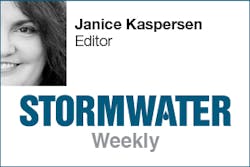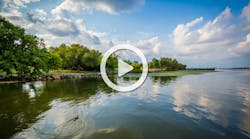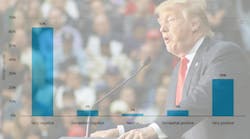
Dozens of chemicals that are commonly found in human drugs and cosmetic products are showing up in an unexpected place: the brains of fish in the Puget Sound.
A study by NOAA Fisheries’ Northwest Fisheries Science Center and the University of Washington tested the waters for 150 different contaminants. They found 81 of them in wastewater flowing to Puget Sound estuaries.
Researchers tested three things: effluent from wastewater treatment plants, water from Puget Sound estuaries, and the fish themselves. Although they expected to find higher levels of chemicals in the estuaries nearest the treatment plants, they also found unexpectedly high levels in waters farther from the plants that were included as reference sites.
The chemicals in question range from antibacterial compounds to substances found in prescription drugs. Two found in large quantities were metaformin, a drug used to treat diabetes, and fluoxetine, an antidepressant marketed as Prozac. Although many of the compounds detected are not toxic to humans, they are present in concentrations that can affect the behavior, growth, and reproduction of fish like Chinook salmon and Pacific staghorn sculpin. The fact that the substances are found in combination raises further questions about how they might interact and affect fish and other aquatic organisms. Researchers estimate as much as 300 pounds per day of the contaminants might be entering the waters of Puget Sound via treatment plant effluent.
An unrelated study reported three years ago in Scientific American showed that fish exposed to certain human antianxiety drugs such as Valium and Xanax display more aggressive behavior and consume food faster. The fish were more likely to swim into unfamiliar waters, thus putting themselves at risk from predators, and their increased rate of consumption of zooplankton—which in turn consumes algae—potentially lead to an increase in algae blooms.
We can’t necessarily affect what’s coming out of the wastewater treatment plants, but stormwater professionals are very much concerned with keeping surface waters “fishable and swimmable.” The drugs, which are not removed by standard treatment, enter the water in two ways. Some are excreted in urine, but the larger and more damaging source is people flushing their unused drugs down the toilet. More—and more widely publicized—programs to encourage people to return their unused drugs to pharmacies for proper disposal would help alleviate that problem. Eventually, new treatment methods—ozone, for one—might make wastewater treatment plants better able to remove the drugs as well.
Although the NOAA study did not specifically address the potential effects on humans of eating fish with high levels of these substances, it’s a question worth investigating. However, one scientist quoted in the Scientific American article notes that the chances of a person getting a significant amount of Valium from eating contaminated fish is small: “You’d have to eat four tons of perch from the river to get one tablet of the drug.”
Upcoming Webinars From Forester University
There is still time to register and earn PDH or CEU credits. Click here for a full list of upcoming webinars and webcasts.
Wednesday, March 16
Qualifying Rain Events, Sampling, & the Construction Site Monitoring Plan
How effective is your SWPPP Construction Site Monitoring Plan? Join speaker and author Mike Peters, CPESC, QSD, to explore how to design and implement a plan that thoroughly maps out the stormwater effluent sampling, monitoring, data collection, and analysis at your construction site AND meets compliance.
Click here for more information and to register.
Free Webinar – Wednesday, March 30
Using Software for Successful Project Design
Are you up-to-date on the latest design and assessment programs?
Join Matthew Welch, CESSWI, for this free webinar sponsored by Profile Products to explore the latest in project design software; its parameters, calculations, and applications; and how you can put it to work at your sites coupled with the Five Fundamentals to maximize your erosion/sediment control and revegetation success.
Click here for more information and to register.
Thursday, April 7
Sidewalks & Recreational Trails: Design, Evaluation, and Management
Did you know that there are more than 1 million miles of sidewalk in North America, and 15-20% need repairs…estimated at $15 billion? Join David Hein to explore the latest innovation in sidewalks and recreation trail design, construction, and maintenance, and how you can apply these techniques to your sidewalks and trails to extend their lifetime, meet compliance, and reduce your costs.
Click here for more information and to register.
April 12 and 14
Hydraulics 101 (for Those Who Skipped It in College)
At a loss when hydraulic engineers start talking? Join former IECA president David Williams to learn to “talk the talk” and better understand your hydraulic engineers and their reports when they’re talking in terms of unsteady flow, allowable sheer stress, Manning’s “n,” etc. In this second part of our Surface Water Master Class series, Williams presents a live and on-demand two-session webinar, where he’ll discuss the base concepts, terms, and analyses behind hydraulics and hydraulic studies, as well as advanced topics (e.g., hydraulic scour of structures, weirs, culverts, hydraulic grade control, and bank stabilization), and how all of these are essential for effective hydraulic design.
Click here for more information and to register.
April 20 – May 26
Sediment & Erosion Control for Construction Sites Master Class Series
Join industry experts Jerald Fifield and Tina Evans for a comprehensive, six-part live and on-demand master class and workshop series exploring the ins and outs of effective sediment and erosion control plan design and review for construction sites. Enjoy six online lectures and Q&A sessions and three interactive workshops presented by Fifield and Evans, delving into Fifield’s best-selling third edition of Designing and Reviewing Effective Sediment and Erosion Control Plans (included in your Master Class Series package).
Click here for more information and to register.
Thursday, May 15
Stormwater Treatment Maintenance: What Works and How to Do It
A major struggle for all stormwater managers is developing an adequate stormwater treatment maintenance program…on a budget. Join returning speaker and author Andrew Erickson to explore the best practices in stormwater treatment maintenance design, implementation, and budgeting, as well as real-world data and examples of what works (and doesn’t).
Click here for more information and to register.
About the Author
Janice Kaspersen
Janice Kaspersen is the former editor of Erosion Control and Stormwater magazines.

